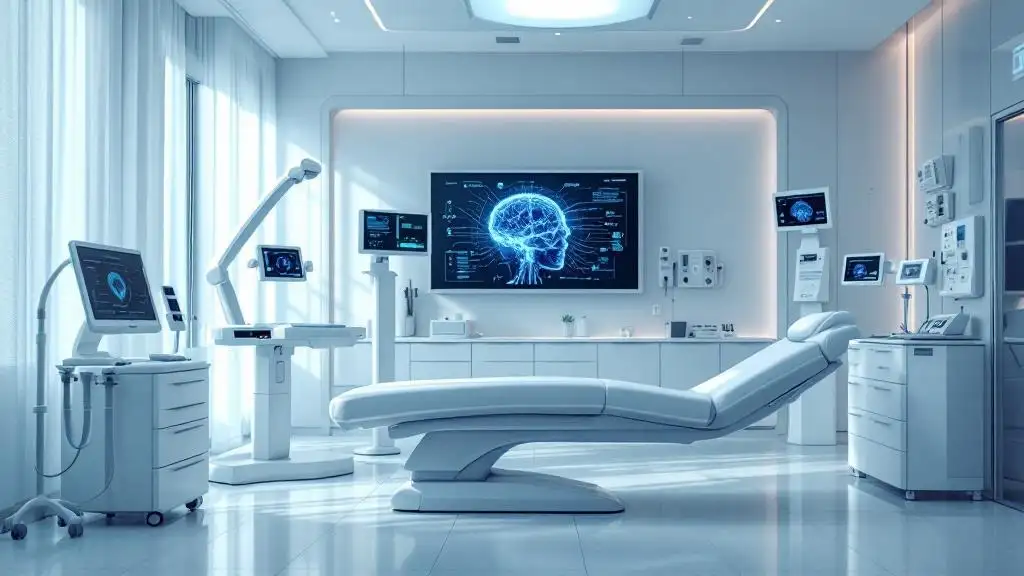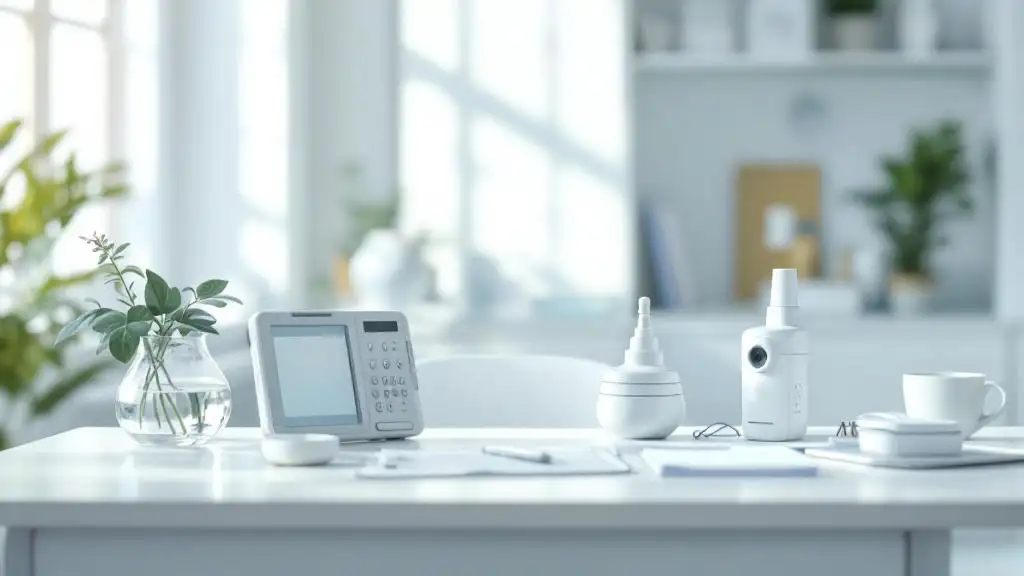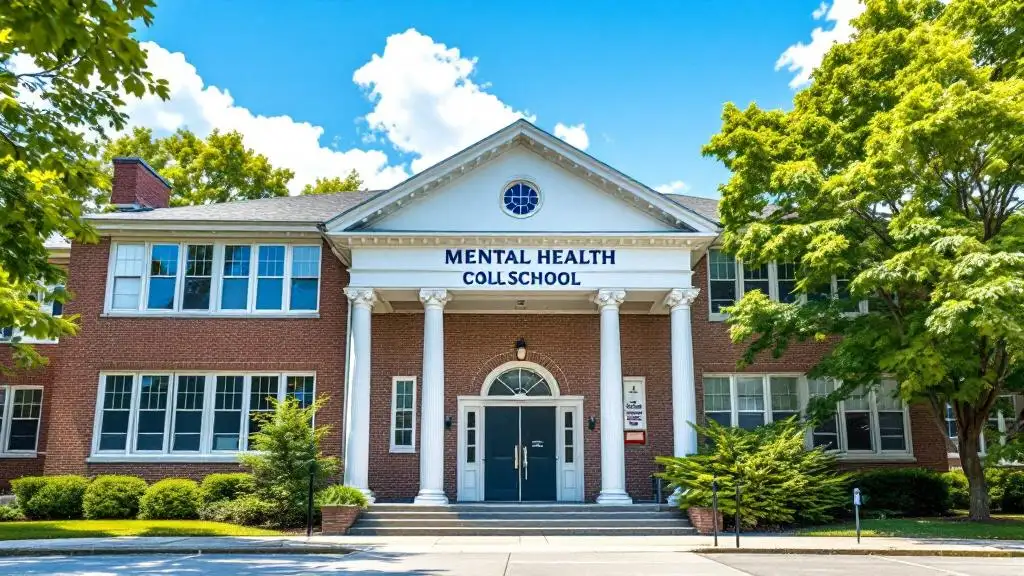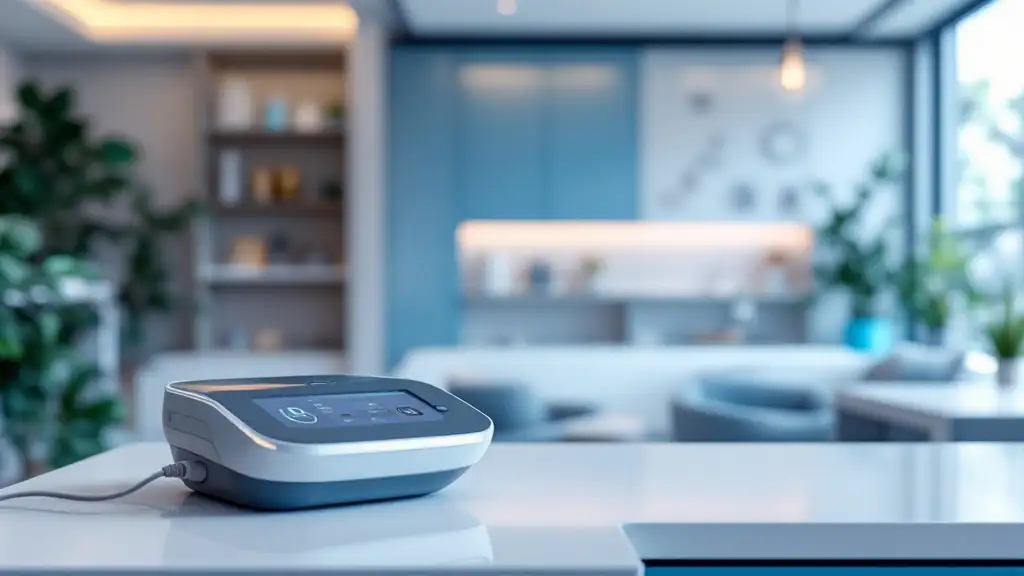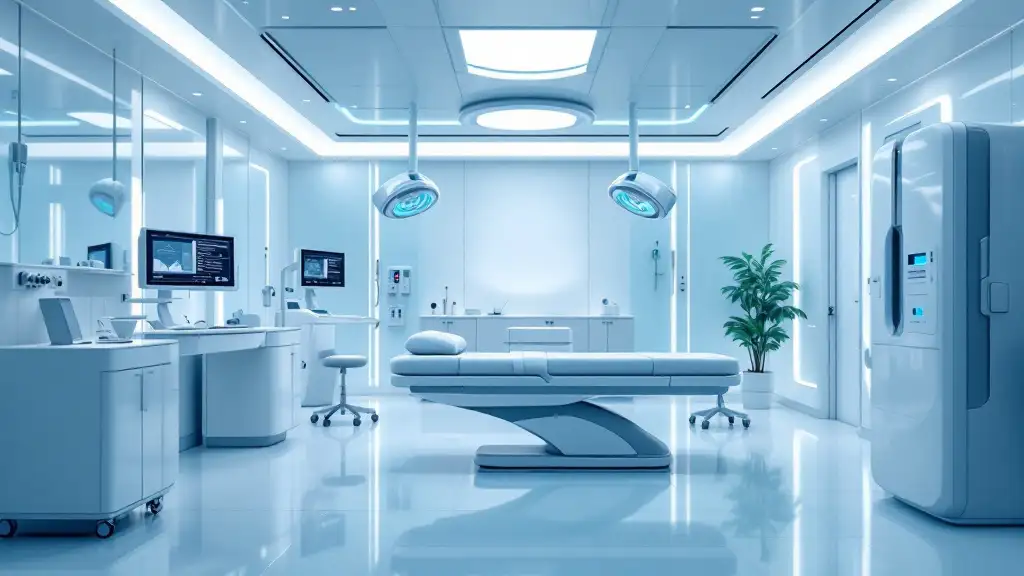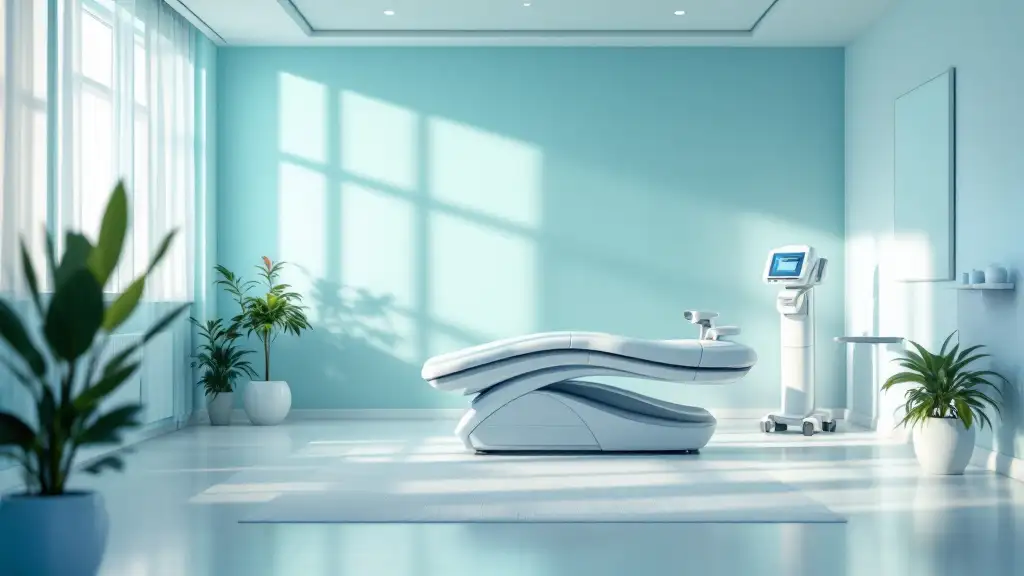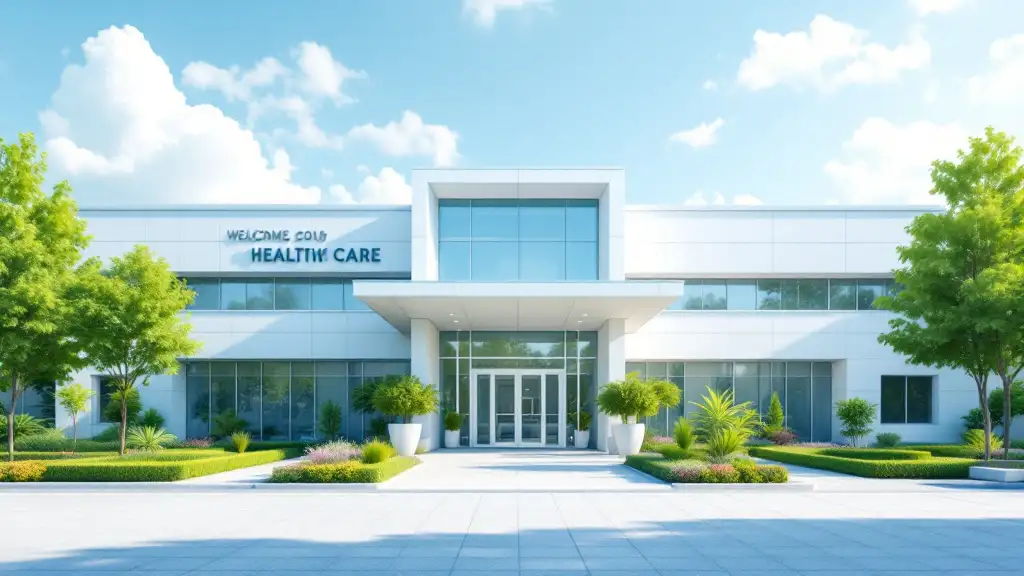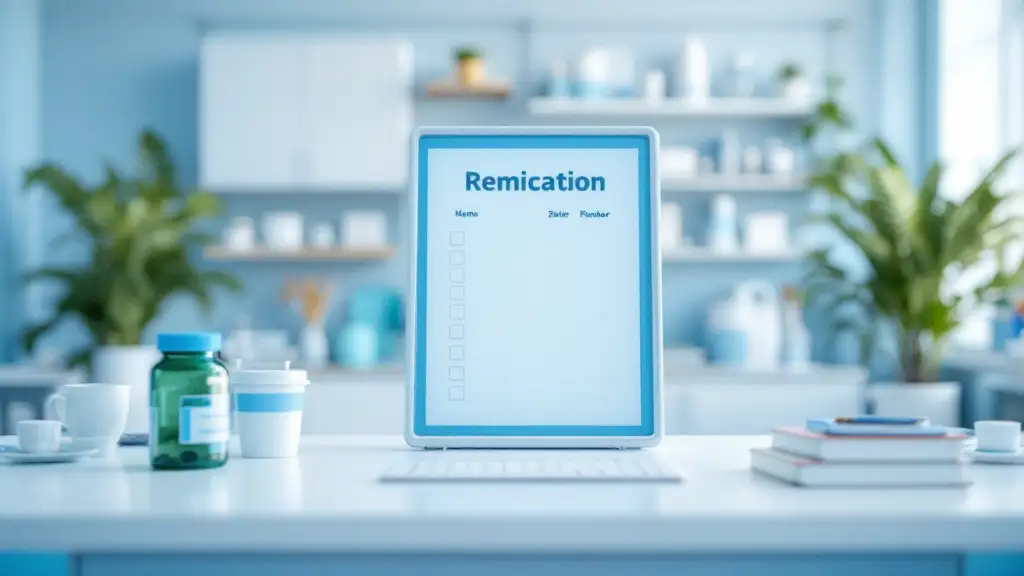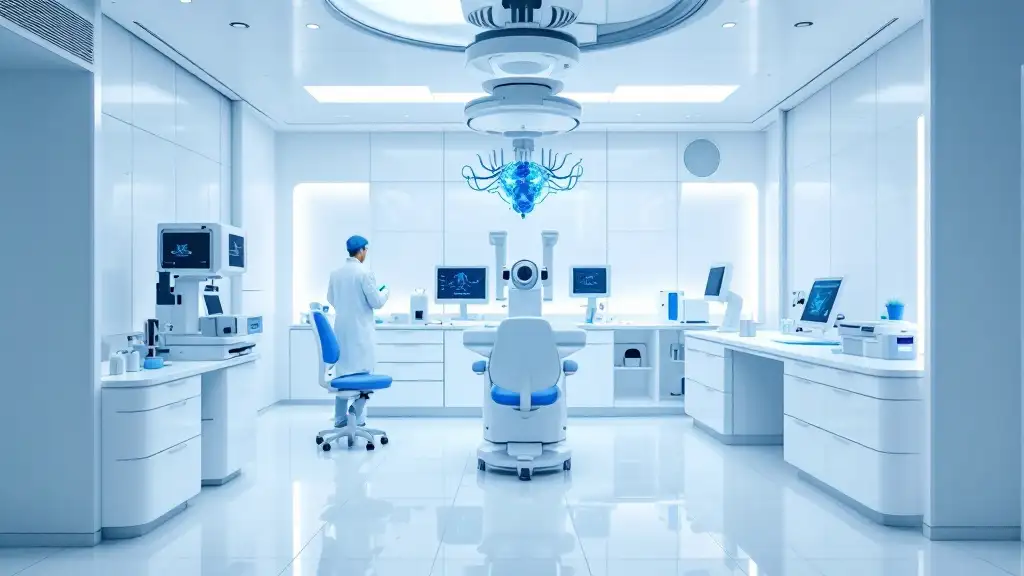Emerging Noninvasive Solutions for PTSD Symptom Relief
Post-Traumatic Stress Disorder (PTSD) continues to challenge mental health professionals with its complexity and resistance to conventional treatments for many patients. Recently, Transcranial Magnetic Stimulation (TMS), a noninvasive brain stimulation technique, has emerged as a promising therapeutic option for adults experiencing PTSD symptoms, especially among those unresponsive to standard approaches. This article explores how TMS integrates within comprehensive mental health care frameworks to support those living with PTSD.
Understanding Comprehensive Mental Health Services
What are comprehensive mental health services?
Comprehensive mental health services refer to a wide-ranging, integrated approach designed to support individuals experiencing mental health challenges. These services include various therapeutic approaches such as counseling, medication management, crisis intervention, and rehabilitation. They are often delivered in community settings to encourage stability, prevent relapse, and facilitate recovery.
Multidisciplinary and community-based approaches
Such services commonly involve multidisciplinary teams composed of psychiatrists, psychologists, social workers, nurses, and other mental health professionals. This collaborative approach ensures that treatment addresses different aspects of a person's condition, including physical, psychological, and social needs. Community involvement is a cornerstone, using education, awareness campaigns, and peer support groups to optimize patient outcomes.
Importance of early detection and reducing stigma
Early detection of mental health issues is critical for effective intervention and better long-term outcomes. Comprehensive services focus on raising awareness and eliminating stigma associated with mental illness through education and public engagement. By reducing stigma, individuals are more likely to seek help promptly, adhere to treatments, and engage in social and occupational activities.
Overall, comprehensive mental health care promotes resilience, social inclusion, and improved quality of life by providing coordinated, patient-centered, and rights-based care that integrates clinical and community resources.
Available Treatments for Anxiety and Depression

What types of treatments are available for anxiety and depression?
Anxiety and depression are commonly managed using psychotherapy and medication, either alone or in combination. Cognitive-behavioral therapy (CBT) stands out as a widely effective psychological treatment for both disorders, helping individuals recognize and modify negative thought patterns.
Medications primarily include antidepressants such as selective serotonin reuptake inhibitors (SSRIs) and serotonin-norepinephrine reuptake inhibitors (SNRIs), which help balance brain chemicals involved in mood regulation. For anxiety specifically, benzodiazepines can provide quick symptom relief but come with risks of dependency, while buspirone offers another medication option with a lower potential for abuse.
Role of lifestyle modifications
In addition to professional treatments, lifestyle changes play an important supportive role. Regular physical exercise boosts mood and resilience against stress. Maintaining healthy sleep habits and a balanced diet also contributes significantly to overall mental well-being. Stress management techniques like mindfulness and relaxation exercises are valuable complementary strategies.
Referral to specialists and combined treatment plans
When symptoms are severe or complicated by additional issues, referral to mental health specialists ensures tailored care. Comprehensive treatment plans may combine psychotherapy, medications, and lifestyle interventions along with support groups or alternative therapies. Continuous monitoring helps ensure sustained improvement and reduces the chance of relapse.
These approaches form a multifaceted framework that can effectively address anxiety and depression, improving patients’ quality of life through integrated care.
How Mental Health Services Support Anxiety and Depression Management
How can mental health services support individuals coping with anxiety and depression?
Mental health services offer tailored therapeutic interventions that address the unique needs of individuals living with anxiety and depression. These interventions often include cognitive behavioral therapy (CBT), which equips patients with practical skills to manage negative thinking patterns and improve emotional regulation. Medication management is another component, ensuring the appropriate use of antidepressants or anxiolytics when necessary.
Education plays a crucial role as well. Services inform individuals about their conditions, helping them understand symptoms and triggers. This knowledge empowers patients to develop effective coping strategies that can reduce distress and enhance daily functioning.
Community-based and early interventions are vital in mental health care. Early identification and treatment can prevent the progression of symptoms and reduce the risk of chronic illness. Integrated care models within communities make it easier for individuals to access support in familiar environments, fostering ongoing engagement in treatment.
Support groups and social interventions further contribute to resilience by encouraging connection and shared experiences. These communal approaches help diminish isolation and improve social skills, reinforcing a supportive network.
Overall, mental health services aim to promote recovery, improve quality of life, and empower individuals to lead healthier, more fulfilling lives through comprehensive care and support systems.
The Crucial Role of Accessibility in Mental Health Care
Why is Accessibility Important in Mental Health Services?
Accessible mental health services ensure that all individuals can receive timely and effective care. This early intervention helps prevent the worsening of mental health issues and reduces risks like suicide. When mental health care is easy to get, people are more likely to seek help before their symptoms become severe, improving overall health outcomes.
How Can Barriers to Mental Health Care Be Reduced?
Several common barriers hinder access to mental health care:
- Cost: High treatment costs can prevent people from seeking help. Making services affordable or covered by insurance increases usage.
- Stigma: Negative attitudes about mental illness discourage people from visiting providers. Educational campaigns can help reduce stigma.
- Provider Shortages: Many areas lack enough mental health professionals, especially specialists. Expanding the workforce and using telehealth can ease this shortage.
What Role Do Digital Tools and Cultural Sensitivity Play?
Digital health technologies, such as online therapy platforms and apps, extend care to those with disabilities or limited mobility. They provide flexibility and can reach underserved regions.
Culturally sensitive care involves offering services that respect diverse backgrounds and languages. This inclusivity helps marginalized communities feel understood and supports better engagement in treatment.
By addressing financial, social, and logistical obstacles, while incorporating innovative tools and cultural awareness, mental health services become more accessible and effective for a broader population.
TMS: A Noninvasive Brain Stimulation Technique for PTSD
What is Transcranial Magnetic Stimulation (TMS) and how is it performed?
Transcranial Magnetic Stimulation (TMS) is a noninvasive method to stimulate specific brain regions using electromagnetic induction. It involves placing an electromagnetic coil against the scalp, which emits magnetic pulses to activate nerve cells in targeted areas of the brain. These pulses generate electric currents that can modulate brain activity, particularly in regions involved in mood regulation. The procedure is outpatient, painless, and does not require anesthesia or sedation, allowing patients to resume daily activities immediately after treatment.
Which brain area does TMS target and why?
TMS commonly targets the dorsolateral prefrontal cortex (DLPFC), a brain region linked to mood control and regulation of emotional responses. For PTSD and depression, the left DLPFC is typically stimulated with high-frequency pulses, which have been shown to improve symptoms by normalizing activity in intricate brain networks, including reducing hyperactive amygdala responses. More recent research also focuses on targeting the right DLPFC, which may better alleviate core PTSD symptoms such as re-experiencing and hyperarousal.
What FDA approvals does TMS have, and what about its safety?
TMS is FDA-cleared for treatment-resistant major depressive disorder since 2008, as well as for obsessive-compulsive disorder, migraines, and smoking cessation. While not yet fully established as a standard PTSD treatment, emerging studies show promising results. TMS is generally safe and well-tolerated, with mild side effects like headache, scalp discomfort, and rare occurrences of seizures—mostly avoidable via established safety guidelines. The overall safety profile is comparable to an MRI, making TMS a low-risk, drug-free treatment option that expands mental health care possibilities for patients who have not responded to traditional therapies.
Clinical Evidence: TMS Effectiveness in Alleviating PTSD Symptoms
What clinical trials and meta-analyses show about TMS for PTSD?
Clinical studies and meta-analyses provide encouraging evidence that Transcranial Magnetic Stimulation (TMS) can effectively reduce PTSD symptoms. High-frequency TMS applied to the dorsolateral prefrontal cortex (DLPFC) has consistently demonstrated positive effects in multiple trials. Meta-analyses show an overall beneficial impact with larger improvements observed using high-frequency stimulation protocols. These findings underline the potential of TMS as a therapeutic option for PTSD.
How does TMS compare with sham treatments in clinical trials?
Randomized control trials (RCTs) comparing active TMS with sham (placebo) treatments have reported significant reductions in PTSD severity scales for patients receiving actual TMS. Improvements often last several months post-treatment, indicating sustained benefits beyond immediate therapy. This comparison confirms that symptom reductions are attributable to TMS rather than placebo effects or natural recovery.
Which PTSD symptoms improve with TMS?
TMS particularly targets core PTSD symptoms including:
- Re-experiencing: Reduction in intrusive memories and flashbacks
- Hyperarousal: Decrease in heightened anxiety and physiological distress
- Avoidance: Improved ability to face trauma-related stimuli without avoidance
Notably, stimulation of the right DLPFC with high-frequency pulses (e.g., 10 Hz) has shown superior results in relieving these symptoms. This symptom-specific improvement broadens treatment options for diverse PTSD presentations.
In summary, well-conducted clinical research supports TMS as a promising, well-tolerated intervention that provides measurable symptom relief for PTSD, especially when targeting particular brain regions with high-frequency protocols.
Optimal TMS Protocols and Target Brain Regions in PTSD Treatment
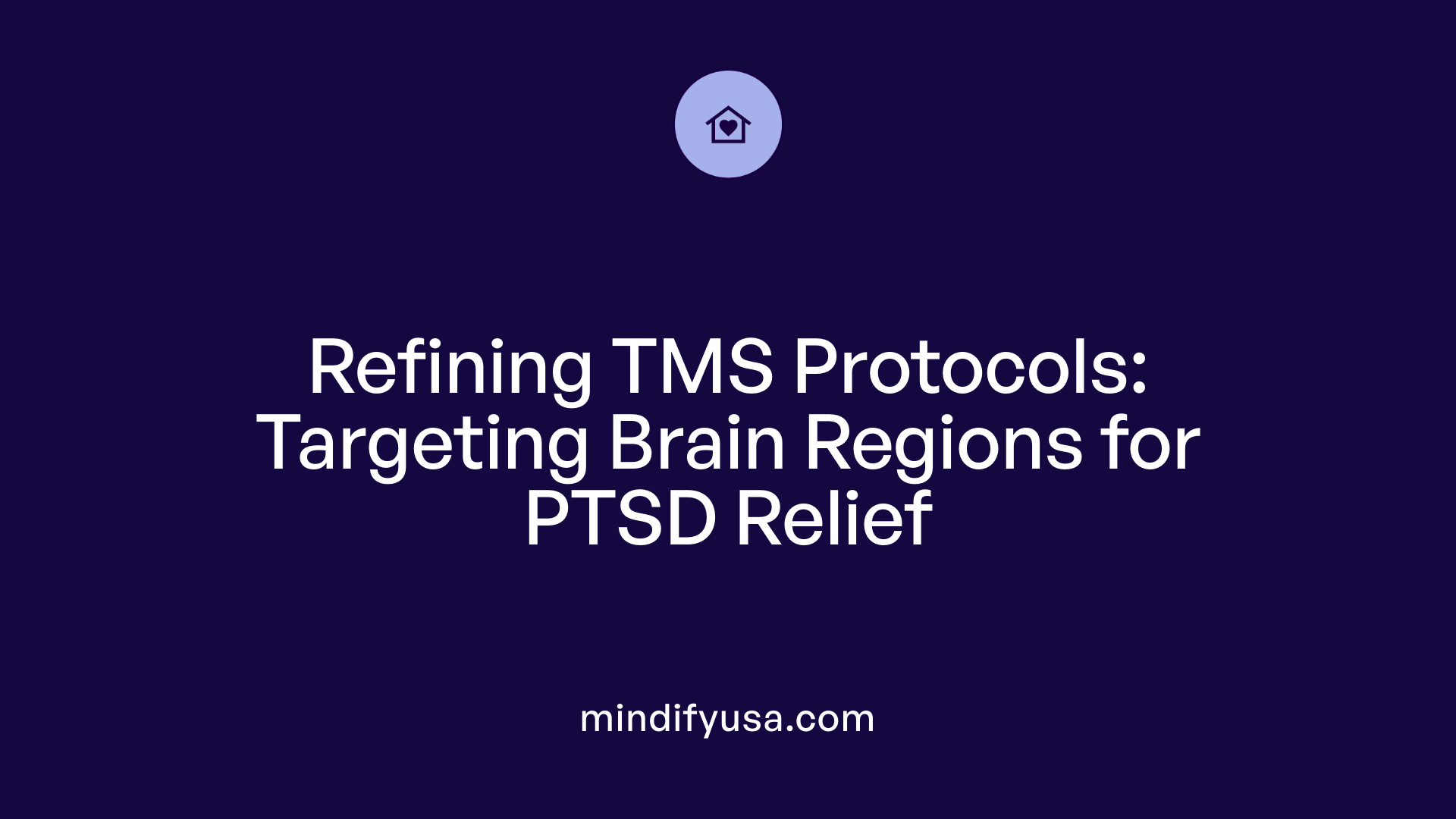
Efficacy of High-Frequency Stimulation on Left and Right DLPFC
Transcranial Magnetic Stimulation (TMS) employs high-frequency pulses to stimulate brain regions critical for PTSD symptoms, especially the dorsolateral prefrontal cortex (DLPFC). Clinical evidence highlights that high-frequency TMS targeting the left DLPFC, already FDA-approved for major depressive disorder, shows promising reductions in PTSD symptoms. More recent research suggests that stimulation of the right DLPFC with frequencies around 10 Hz may be even more effective, particularly in alleviating core PTSD symptoms such as re-experiencing traumatic events, hyperarousal, and avoidance behaviors.
Neurobiological Mechanisms Underlying TMS Effects
The therapeutic impact of TMS in PTSD involves modulation of dysfunctional brain networks. Key mechanisms include normalization of the hyperactive amygdala—which plays a central role in fear and emotional processing—and enhanced regulation by prefrontal cortex regions like the DLPFC. This rebalancing helps reduce heightened emotional responses and improves cognitive control over trauma-related memories and symptoms.
Session Frequency and Treatment Duration
Effective TMS treatment protocols for PTSD typically require daily sessions conducted five days per week over a 4 to 6 week period. Each session involves delivering repetitive magnetic pulses to the target brain region, usually lasting between 20 and 40 minutes. Patients often experience gradual symptom improvement, with effects in some studies lasting several months after treatment completion. Maintenance sessions may be recommended subsequently to aid in relapse prevention and sustain clinical benefits.
| Protocol Aspect | Details | Clinical Implication |
|---|---|---|
| Stimulation Frequency | High-frequency (5–10 Hz), especially 10 Hz on right DLPFC | Enhanced symptom relief including avoidance and re-experiencing |
| Target Brain Regions | Left and right dorsolateral prefrontal cortex (DLPFC) | Tailored targeting may optimize treatment response |
| Session Duration | 20–40 minutes per session | Practical outpatient treatment schedule |
| Total Treatment Length | 4 to 6 weeks, daily sessions (5/week) | Sustained symptom improvement over months |
| Neurobiological Effects | Amygdala downregulation, prefrontal cortex modulation | Core symptom reduction through brain circuitry normalization |
Safety and Side Effects of TMS Therapy

What are the common side effects of TMS therapy?
Transcranial Magnetic Stimulation (TMS) therapy is generally well-tolerated with mild side effects. The most frequently reported issues include headaches and scalp discomfort or pain, which patients often describe as manageable and temporary. Some patients may also experience facial twitching or lightheadedness during or shortly after treatment sessions.
Are there any rare but serious adverse effects?
Rarely, TMS can trigger seizures, especially with high-frequency stimulation protocols. However, this risk is extremely low, estimated at about 0.1%, and is typically avoided by adhering to strict safety guidelines during treatment administration. Hearing loss and tinnitus have been reported infrequently but are uncommon when proper hearing protection is used.
How are side effects managed and what are the contraindications?
Side effects such as headaches or scalp pain are usually managed with over-the-counter analgesics. The noninvasive nature of TMS means anesthesia or sedation is not required, allowing patients to return to their daily activities immediately after sessions. Patients with non-removable metal implants in the head or certain neurological conditions are usually contraindicated for TMS due to safety concerns. Careful patient screening before treatment helps minimize risks.
Overall, TMS presents a favorable safety profile, making it a viable treatment option for individuals with PTSD and other mental health conditions, particularly for those who have not responded well to conventional therapies.
Combining TMS with Psychotherapy for Enhanced Outcomes
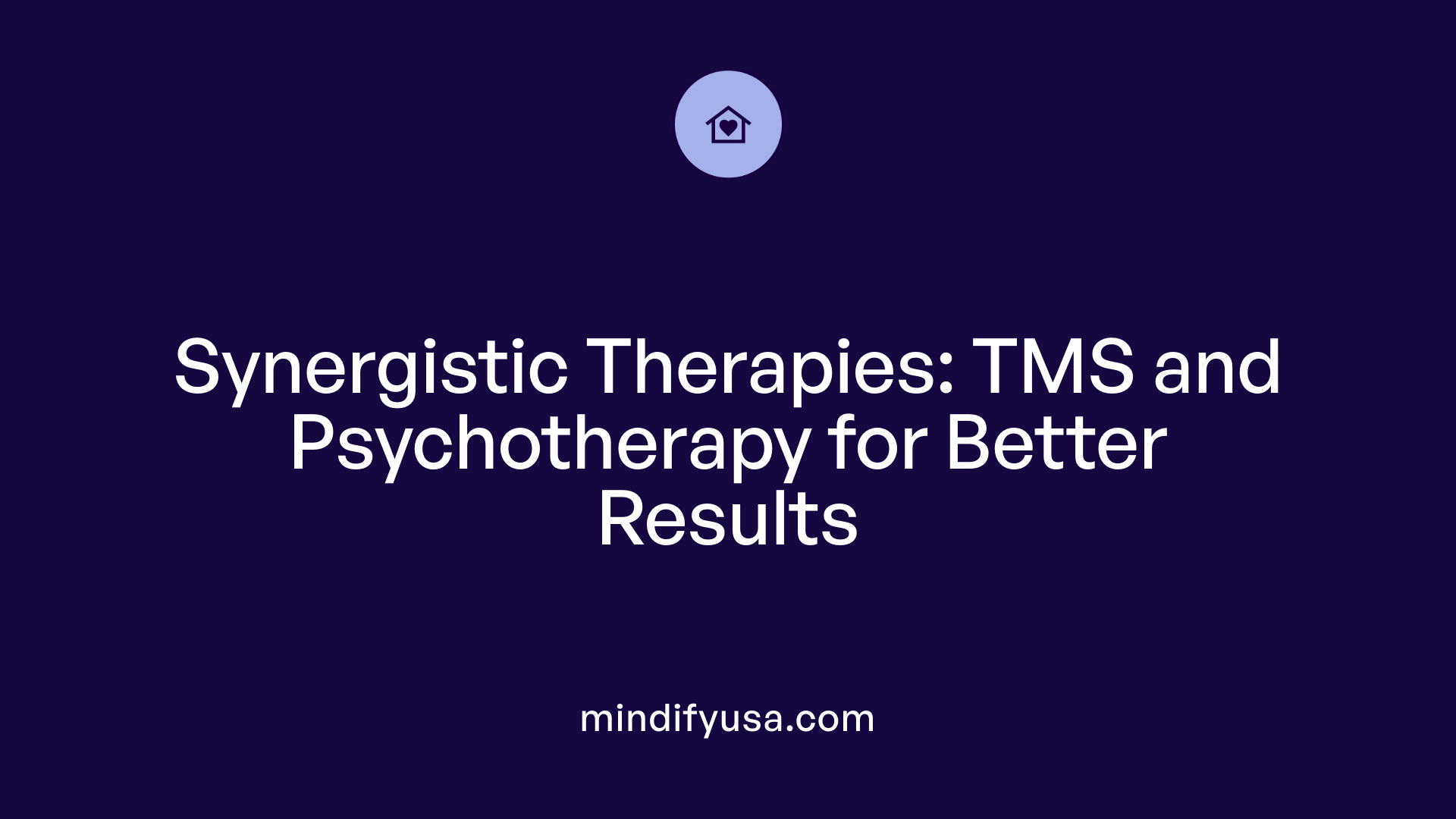
How does TMS work together with cognitive-behavioral therapy to improve PTSD outcomes?
Combining Transcranial Magnetic Stimulation (TMS) with cognitive-behavioral therapy (CBT) can produce synergistic effects in the treatment of PTSD. While TMS targets brain regions involved in mood regulation and fear responses—modulating activity in the dorsolateral prefrontal cortex and normalizing hyperactive areas such as the amygdala—CBT directly addresses the psychological processes and behaviors sustaining PTSD symptoms. This dual approach enhances symptom reduction beyond what either treatment achieves alone, promoting better emotional regulation and cognitive processing.
What social and occupational improvements are observed when TMS is combined with psychotherapy?
Clinical trials involving veterans and civilians with PTSD have shown that integrating TMS with psychotherapy, especially CBT, leads to significant improvements not only in reducing core PTSD symptoms but also in enhancing daily functioning. Patients report improved social interactions, increased ability to maintain relationships, and better performance at work or school. This broader functional recovery supports patients in regaining independence and improving quality of life.
What are the strategies for preventing relapse after combined TMS and psychotherapy treatment?
Relapse prevention strategies often include maintenance TMS sessions paired with ongoing psychotherapy or medication management. Continuing CBT helps reinforce coping skills and resilience, while booster TMS treatments can sustain neurobiological changes that support symptom control. Post-treatment care typically involves monitoring and adjustments tailored to patient needs to maintain improvements and reduce the risk of symptom recurrence over the long term.
TMS Within Comprehensive Mental Health Services for PTSD and Beyond
What role does TMS play alongside medication and therapy in mental health care?
Transcranial Magnetic Stimulation (TMS) is often integrated into a broader treatment plan that includes medication and psychotherapy for conditions like PTSD, depression, and anxiety. It is especially valuable for patients who have not responded adequately to traditional treatments such as antidepressants or cognitive-behavioral therapy (CBT). By stimulating specific brain regions involved in mood and emotion regulation, TMS can enhance the effects of other therapies and support sustained symptom relief.
How useful is TMS in treatment-resistant mental health conditions?
TMS is notably effective for treatment-resistant cases. Approximately 60% of patients with major depression who do not respond to medications experience significant improvement with TMS. Research on PTSD also highlights its benefit for individuals who have had limited success with standard interventions. When combined with cognitive-behavioral therapy, TMS has shown improved outcomes, including better social and occupational functioning.
How is TMS integrated into broad mental health care for anxiety, depression, and PTSD?
Within comprehensive mental health services, TMS is recognized as a non-invasive, drug-free adjunct or alternative treatment. It complements established mental health strategies by targeting the neurobiological mechanisms behind mood disorders and PTSD. This approach increases options for personalized care, affording patients who struggle with traditional therapies a path to symptom reduction. Although more research is needed to optimize protocols and confirm long-term efficacy, current evidence supports TMS's role in a holistic mental health treatment framework.
| Aspect | Details | Clinical Implication |
|---|---|---|
| Adjunctive Role | Enhances medication and psychotherapy effects | Improves treatment outcomes for resistant cases |
| Target Conditions | PTSD, depression, anxiety, OCD | Broad applicability within mental health services |
| Treatment Protocol | Daily sessions for 4-6 weeks, outpatient, non-invasive | Convenient with minimal recovery time |
| Safety Profile | Mild side effects, very low risk of serious adverse events | Suitable for diverse patient populations |
| Outcome Improvements | Symptom reduction, better functioning | Supports recovery and quality of life |
TMS's integration into comprehensive care models represents a progressive advance, offering hope to individuals living with complex psychiatric conditions.
Challenges and Future Directions in TMS Research for PTSD
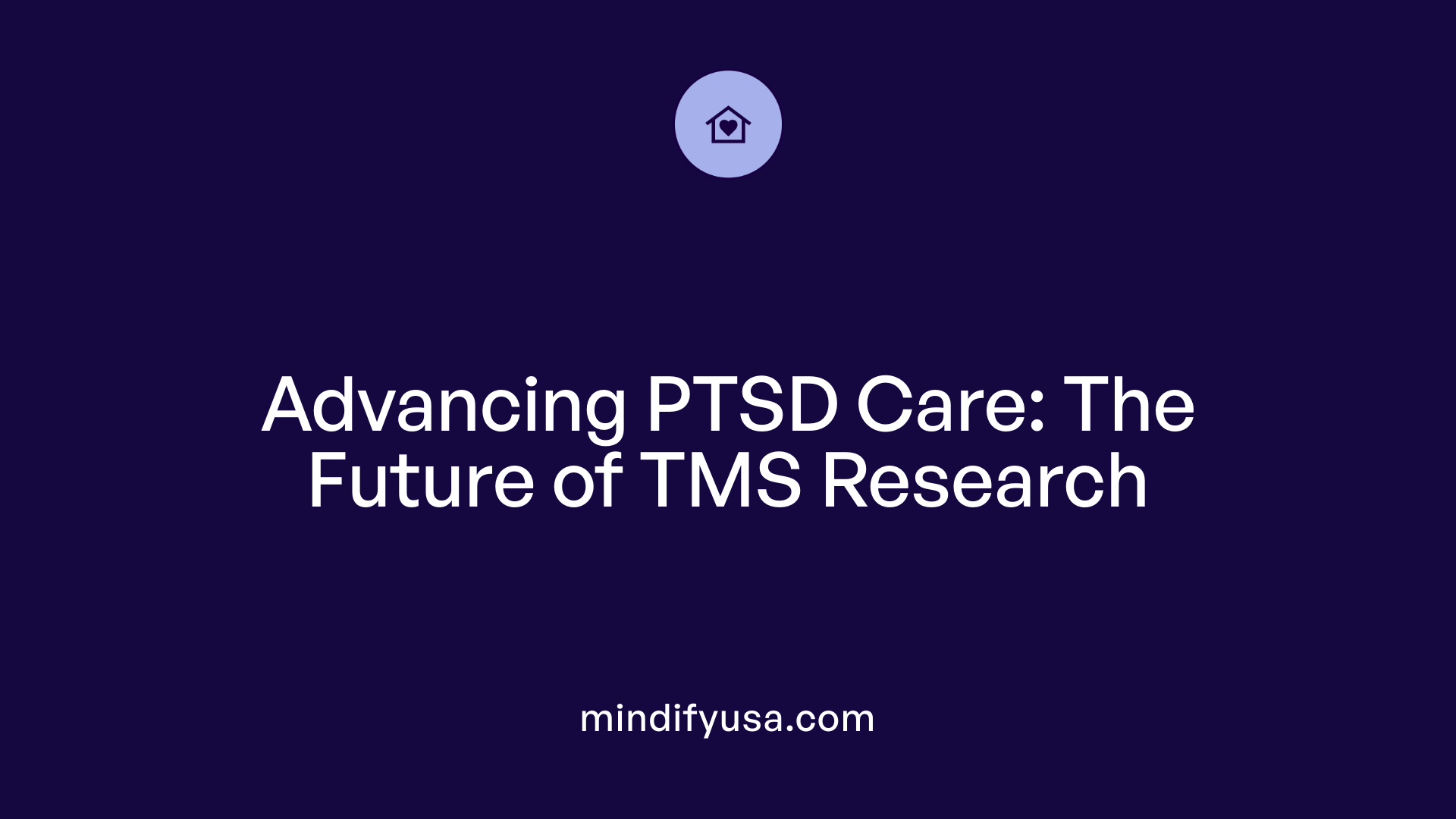
Why is there a need for large-scale studies and protocol optimization?
Although Transcranial Magnetic Stimulation (TMS) shows great promise for reducing PTSD symptoms, current evidence is limited by small sample sizes and varied treatment protocols. Large-scale studies are essential to determine the most effective stimulation parameters, such as frequency, duration, and brain region targeting. Optimizing these protocols could enhance symptom relief, improve long-term outcomes, and provide standardized guidelines for clinical practice.
What limitations arise from study heterogeneity?
A major challenge in TMS research for PTSD is heterogeneity among studies, including differences in patient populations, stimulation sites (left vs. right dorsolateral prefrontal cortex), session frequencies, and combination with other therapies like cognitive-behavioral therapy. This variability limits the generalizability of findings and complicates the synthesis of evidence. Additionally, some improvements may be influenced by placebo effects or natural recovery, emphasizing the need for rigorous, well-controlled trials.
Could TMS become a standard treatment for PTSD?
Current meta-analyses and systematic reviews support TMS as a promising treatment option for PTSD, particularly when conventional therapies have fallen short. While TMS is already FDA-approved for depression and other conditions, more research is required to establish its long-term efficacy and position it as a standard PTSD treatment. Future advancements in technology and a clearer understanding of neurobiological mechanisms may solidify TMS's role in comprehensive mental health care for PTSD patients.
Looking Ahead: TMS as a Component of Comprehensive PTSD Care
Transcranial Magnetic Stimulation represents a promising advancement in the treatment arsenal for adult PTSD symptoms, offering a noninvasive, well-tolerated option particularly valuable for patients resistant to conventional approaches. While embedded within comprehensive mental health services that address anxiety and depression, TMS specifically targets neurological pathways implicated in PTSD, facilitating symptom relief and functional improvement. Ongoing research will refine protocols and expand understanding of its long-term benefits. Ultimately, TMS has the potential to enhance recovery, reduce suffering, and improve quality of life for many adults coping with PTSD.
References
- Transcranial Magnetic Stimulation for Post-traumatic Stress ...
- Transcranial magnetic stimulation
- Transcranial Magnetic Stimulation (TMS) for Depression, ...
- Transcranial Magnetic Stimulation (TMS) – Treatment For ...
- SUMMARY OF EVIDENCE - Transcranial Magnetic ...
- Transcranial Magnetic Stimulation: A Quick Guide
- How TMS Therapy Targets PTSD
- Anxiety disorders - Diagnosis and treatment

